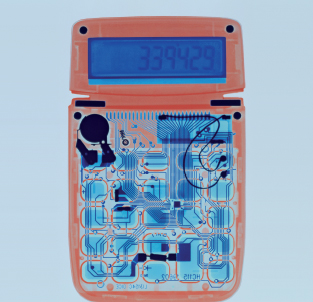537
- 8.1Sequences
- 8.2Infinite Series
- 8.3Properties of Series; the Integral Test
- 8.4Comparison Tests
- 8.5Alternating Series; Absolute Convergence
- 8.6Ratio Test; Root Test
- 8.7Summary of Tests
- 8.8Power Series
- 8.9Taylor Series; Maclaurin Series
- 8.10Approximations Using Taylor/Maclaurin Expansions
- Chapter Review
- Chapter Project

How Calculators Calculate
When you want to find the sine of a number, you probably type it into your calculator or computer and use the number that comes out. Have you ever thought about how the calculator/computer obtains the result? Since we are only good at computing integer powers of numbers, we have no direct way to evaluate transcendental functions, such as the exponential function or the sine function. We know that sin π= 0, but what is sin 3? Since sin 3 is an irrational number, it is represented by a nonrepeating, nonterminating decimal. So, computers and calculators work with approximations for transcendental functions that involve integer powers.
Most transcendental functions can be expressed as power series. As we shall see in Section 8.8, a power series is an infinite sum of monomials with integer exponents. Since we are good at raising numbers to integer powers, we can truncate these series and find good polynomial approximations to transcendental functions on restricted domains. This is how computers evaluate many transcendental functions.
CHAPTER 8 PROJECT
In the Chapter Project on page 634 we examine how calculators obtain lightning-fast approximations.
The idea of adding an infinite collection of numbers has long intrigued mathematicians. In this chapter, we explore the consequences of a definition for an infinite sum. Beginning with sequences, we are led to infinite series, an infinite sum of numbers. We examine various tests to determine whether an infinite series has a sum, converges, or whether it does not, diverges. Finally, we investigate power series, representations of functions by infinite series.